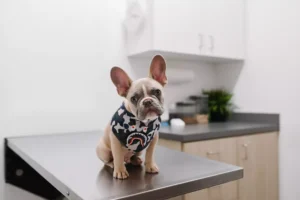Spring has arrived, signaling the breeding season for many animals. Within the veterinary community, attention frequently shifts to spaying and neutering during February and March to mitigate the spike in newborn kittens and puppies characteristic of spring. Beyond preventing unplanned litters, spaying or neutering your pet addresses various behavioral issues. Following the procedure, Fido and Fluffy often display heightened calmness and improved behavior. Although a standard procedure, it’s crucial to give your pet added attention during recovery. Discover insights from a Fayetteville, NC vet who answers common questions and offers advice on ensuring your pet’s healing process is smooth and swift.
Is Running or Jumping Acceptable for My Pet Post-Surgery?
It’s crucial to restrict your pet’s activity as they recover, especially in the first few days after surgery. Confining your pet to a small area for the initial 3-5 days is highly advised. A dog crate or puppy pen can offer a secure space for both Fido and Fluffy during this crucial period.
During the initial phase of recovery, expect your pet to prioritize rest to aid in the healing process. Over time, usually after a few days, you may notice a gradual increase in their energy levels. However, complete recuperation will require a period of at least 10 to 14 days. It’s essential to restrict your pet from participating in activities such as running, jumping, or vigorous play during this recovery window. While Fido may still require short walks, ensure they are leashed and brief to prevent overexertion. Rest assured, there will be ample opportunity for play and exploration once they have fully healed.
Tips for Keeping My Pet’s Spay/Neuter Healing Process as Smooth as Possible?
Upon discharge, your veterinarian will provide specific instructions, encompassing medication protocols and dietary preferences for your pet’s return home. These guidelines may vary slightly depending on individual factors. However, we’re here to offer some additional assistance with helpful tips!
Our suggestions are as follows:
Make Sure You Ask Any Last-Minute Questions Before You Leave
Bringing your beloved furry friend for a procedure, regardless of its routine nature, can induce stress. To address any pre-operation queries or thoughts, consider making notes or setting a voice reminder. This preparation ensures you won’t overlook important details when you’re at the clinic.
Be Sure to Follow the Directions Precisely
After your visit, the clinic will provide after-care instructions, usually on a sheet. These guidelines will outline what to do and what not to do during your pet’s recovery. Review them thoroughly and don’t hesitate to seek clarification if needed.
Extra care may be necessary for food instructions. Your Fayetteville, NC vet may suggest giving a very small meal after surgery or waiting until the next day.
Use Proper Gear to Protect Those Stitches
Following surgery, Fluffy and Fido typically wear an Elizabethan collar upon discharge, much to their dissatisfaction. Despite their aversion, this collar is crucial for their well-being. With the surgical incision healing, itching is bound to occur, prompting pets to scratch or bite, posing a risk to the stitches. Hence, the collar acts as a protective barrier against potential harm.
Consider opting for an inflatable collar for your pet. They offer more comfort and less obstruction to your pet’s vision compared to traditional lampshade collars. Consult your vet for guidance on this alternative.
Remember that some pets are creative in their efforts to remove these collars, even if it results in self-harm. If your pet cannot tolerate the collar, contact the clinic for assistance.
Make Sure Your Pet Has a Nice Bed
Ready to upgrade your pet’s bed? It’s an ideal moment to do so! Fido or Fluffy will truly value having a snug, warm place to unwind while they recover. Consider adding soft blankets, but ensure they won’t shed fibers that could irritate your pet’s stitches.
Create a cozy environment for your pet. Consider playing soft music in the background to soothe them. Dog or cat TV could also offer entertainment and stimulation to keep them occupied.
Make Sure Other Pets Remain Separate
If you have more than one pet, consider keeping your furry patient in a separate area as they heal. Despite their strong bond and affection, focusing on healing now is critical to avoid potential complications.
Set Limits on Exercise
Fido and Fluffy are known for their active and playful personalities. However, it’s crucial not to encourage them to engage in vigorous running or play until they’ve fully recovered and received clearance from the vet. Store Fluffy’s climbing structures until she’s fully cleared.
Monitor Your Pet’s Incision
Ensure to frequently inspect your pet’s stitches or incision. Keep vigilant for any unusual signs and promptly reach out to your Fayetteville, NC vet if you suspect any issues.
You can look out for the following:
- Redness
- Bleeding
- Discoloration
- Foul Odor
- Pus
- Swelling
Additionally, be on the lookout for other indicators like vomiting, diarrhea, lethargy, and fever.
Be Mindful When Giving Medication
Follow the prescribed pain meds’ instructions meticulously. Do not administer any other medications to your pet during their healing process unless specifically authorized by your veterinarian.
Offer Affection and Comfort
During the initial days, many pets tend to sleep extensively. Allow your furry companion to heal primarily. Nonetheless, offering gentle pets and forehead kisses can provide comfort to your adorable patient, but avoid forcing attention as some pets may not care for the extra attention during their recovery.
Abstain from Baths and Grooming Temporarily
While grooming is vital for your pet’s health, it’s crucial to avoid getting the incision wet or contaminated during baths or grooming sessions. Wait until your vet approves before resuming these activities. For spot cleaning, consider using pet wipes or a damp washcloth, but steer clear of the incision area. If your pet jumps into a pond, accidentally gets bathed, or otherwise manages to get their incision wet, seek advice from your clinic.
What’s the Healing Time for My Pet After Surgery?
The usual recovery time frame is anywhere from 10-14 days. However, male pets generally recover more quickly than females. While there may be signs of improvement within a few days, it’s important to remember they’re still in the healing process. Excessive activity could lead to complications, such as further injuries or torn stitches.
Can I Leave My Pet by Themselves After Spay/Neuter Surgery?
While it may not be feasible for most people to provide 24/7 care for their pets for two weeks, it’s best to refrain from leaving pets unattended for at least 48 hours, with the first 12 hours being particularly critical.
This is a chance for you to take a mini-vacation though! Silver linings and all. Take advantage of the time to catch up on your favorite show or tackle that organization project you’ve been neglecting.
Is Walking My Dog Allowed After Spay/Neuter Surgery?
It’s inevitable that Fido will need to go outside. Keep the outings brief and to the point. Ensure he doesn’t engage in excessive running and avoid interactions with other dogs.
Can Cats Employ a Litter Box After Being Spayed?
Yes, Fluffy will still need to use the litter box. It’s best to scoop daily during the recovery process, even if you don’t always do so because it needs to be extra clean to avoid contaminating the incision.
If your litterbox has high sides, consider getting one with lower walls, which you can often find at pet stores for a reasonable price.
Need to schedule spay/neuter surgery for your pet? Questions about the recovery process? Reach out to us, Academy Pet Hospital in Fayetteville, NC, today!





